Want to learn more about the metrics I use in tracking the metagame? You can find an explainer here.
It’s finally here! Outlaws of Thunder Junction has hit Magic Online and with it we had our first look at the latest iteration of Pauper. And what a look we had – not only were there the four regular Challenges on the weekend but Saturday also gave us an eight round Showcase Qualifier. In the span of 72 hours there were five major Pauper events and with it we got a solid look at the metagame. Did my most recent Power Rankings hold up? We’ll have to see.
First, a few pieces of bookkeeping. This season I’ve made some updates to the way I classify certain archetypes. Boros Synth has now been split into Boros Glitters and Boros Synth, which is dependent on the presence of All That Glitters. Black Gardens is now Golgari Gardens while Madness Burn gets the more appropriate Rakdos Madness moniker. Finally, Orzhov Blade gets its own delineation from other black-white builds.
Okay, let’s get to the data. First up we have the overall Challenge Metagame.
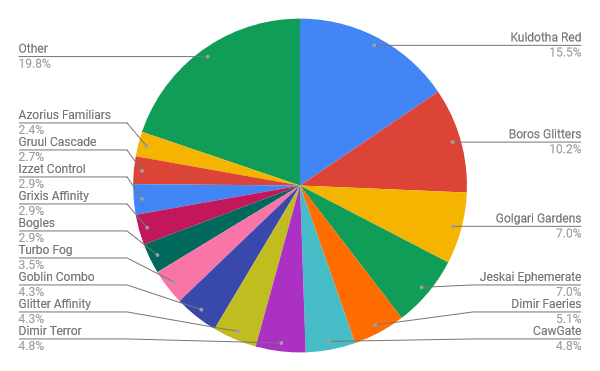
Once again we see Pauper swinging back towards being more aggressive in the early going. Between the Showcase and the Sunday “Bonus” Challenge, Kuldotha Red was all over the place and ended up being the most popular archetype on the weekend. Some pilots decided to incorporate Reckless Lackey into their builds while others ignored the new card. A few players opted to add Goblin Grenade for additional closing speed. Kuldotha Red also ended up as the most popular deck in the Top 32 metagame and had the largest share of the Winner’s Metagame and did all of this while having the second best overall performance over the span of the five tournaments.
Kuldotha Red never really went anywhere but it also is far more vulnerable that it was before Monastery Swiftspear got the axe. Losing that additional dimension means the strategy has to lean harder on early aggression and try to get under the opponent’s defenses. Once the game hits the middle and late stages, however, other decks’ answers start to come online. One thing that happens time and time again is that as a new set his the scene aggressive decks succeed early before the rest of the format adjusts to the new pace of threats.
We see this trend continue with the strength of Boros Glitters. The second most popular deck across all the tournaments (and, spoilers, holding that position in the Top 32 metagame and Winner’s Metagame). The current “scourge” of the format has the ability to grind with Clues and other artifacts while also going over the top with All That Glitters. While popular the format seems to have adjusted somewhat to its presence – Boros Glitters ended the weekend with an Adjusted Meta Score Above Replacement of 0.21 – the seventh best score on the weekend. From the performance of Kuldotha Red and Boros Glitters, as well as the provided lists, we can infer that decks were better situated to handle one large threat rather than several small creatures.

The chart above represents the Top 32 metagame and here we can see the strength of being on the beatdown plan in Pauper, at least early in Thunder Junction season. The two prominent Galvanic Blast decks were just under 26% of the total metagame but the same two decks were over 31% of the Top 32 metagame. The next five most popular decks (Golgari Gardens, Jeskai Ephemerate, CawGate, Dimir Faeries and Dimir Terror) were 28.7% of the entire metagame. In the Top 32 these five decks account for 23.7% of that field, but the Dimir duo lag behind Azorius Familiars, Bogles, Goblin Combo, and Turbo Fog in Top 32 presence.
Again we see the power of beatdown decks early in the metagame as other decks adjust to the new pacing of things. But if we look at the breakdown of the decks listed (those over 2% of the format over the weekend) we see a metagame that on the surface appears balanced between assertive decks and more controlling ones. The starkness of the numbers comes down to the fact that were are far fewer ways to succeed in attacking in Pauper than there are in slowing the game down. If you want to be anywhere on the spectrum from midrange to control you have several potential incentives. If you want to reduce your opponent’s life total as quickly as possible you have comparatively few choices which helps to exacerbate the presence of popular beatdown strategies.
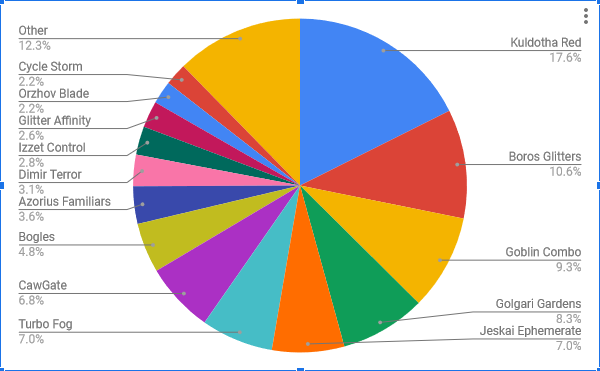
This chart represents the Winner’s Metagame and here we see the first major shakeup – the rise of Goblin Combo. If you’ve been following my writing for the past few weeks you may have seen more digital ink spilled on this archetype than many others and that is because the strategy is coming back into its own. Goblin Combo had the best weekend as measured by Adjusted Meta Score Above Replacement, ending the five event marathon with a score of 1.26; the next best score was 0.89 out of Kuldotha Red, which shows just how far ahead of the field Goblin Combo was on the weekend. Being able to largely ignore the interaction of the day – the kind focused on attacking creatures and burn spells – is a reasonable path to victory.
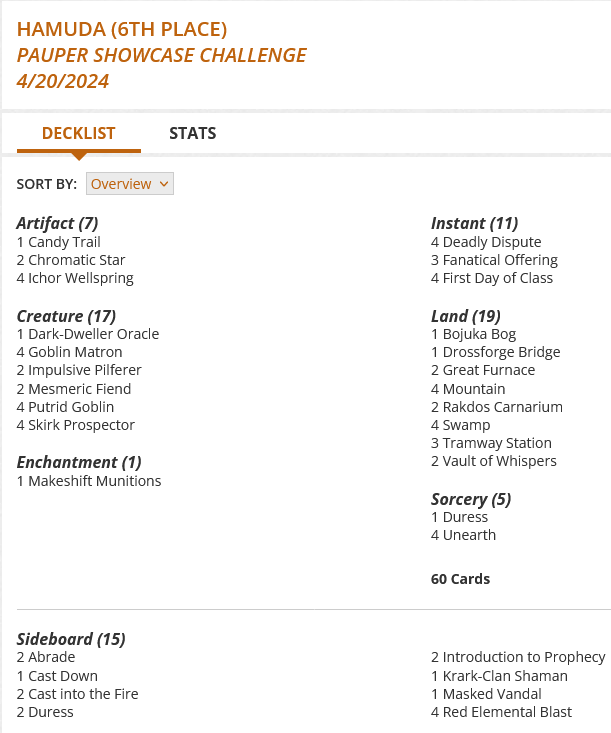
Goblin Combo can generate an unbound amount of mana due to the interaction of Skirk Prospector with First Day of Class and Putrid Goblin. The -1/-1 counter from Persist is negated by the +1/+1 counter from First Day of Class which creates an unbound loop. Once a Dark-Dweller Oracle is found the deck can then dig to Makeshift Munitions and win the game. The deck can struggle in metagames where graveyard hate is abundant but I am not sure if that trend will be coming next week. In the interim planning to ignore your opponent remains a good choice.
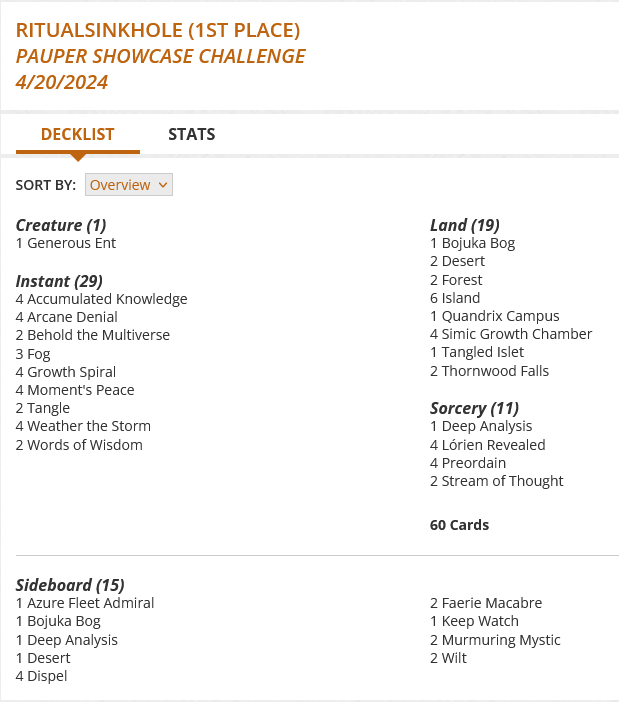
Turbo Fog is another deck that can just render an opponent’s game plan moot. The deck had a very respectable 0.43 aMSAR which is good for fourth best on the weekend. I feel out of all established Pauper decks this one might get the most out of Outlaws of Thunder Junction with the advent of Dance of the Tumbleweeds. A card that can fetch actual factual Desert while putting a ton of power and toughness on to the battlefield could be worth an inclusion, especially if people are going to keep attacking with tiny creatures.
I want to take a moment to thank all my Patrons I am going to do my level best to keep providing you with the kind of content that brought you here in the first place. If you are interested in supporting my work, rewards for my Patreon start at just $1.
Can’t make a commitment to Patreon? I have a Ko-Fi where you can make a one time contribution.
Looking for another way to support my work? Click here for my TCGPlayer affiliate link. Any purchases through the link let the folks there know you like my content!

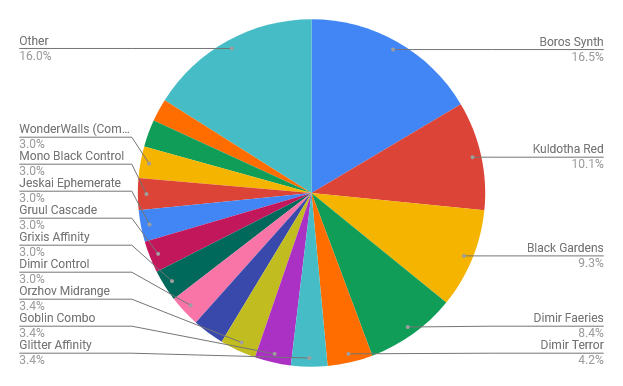

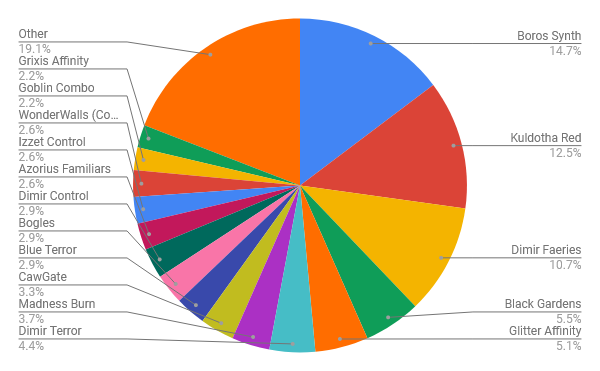
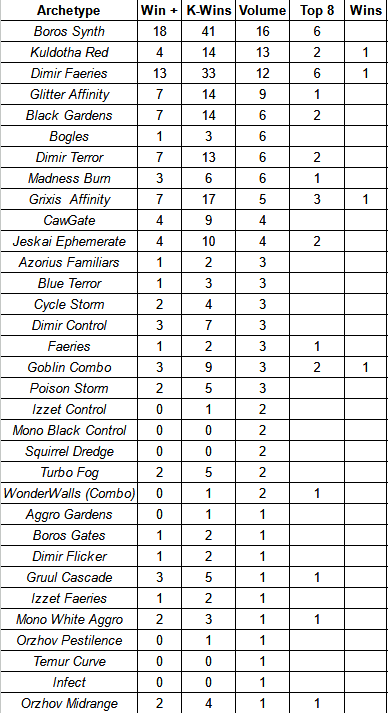
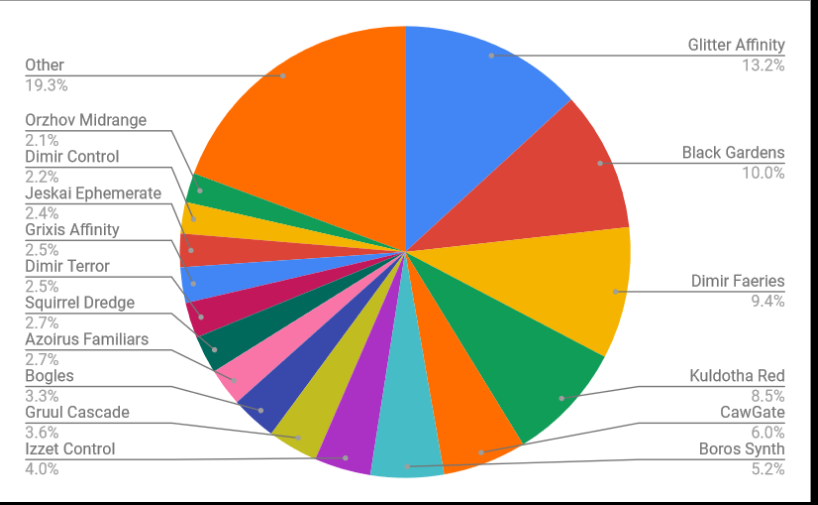
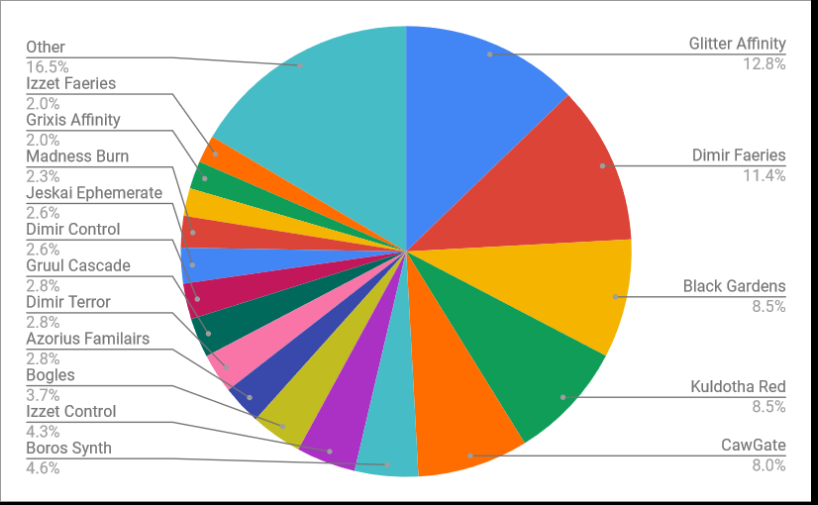
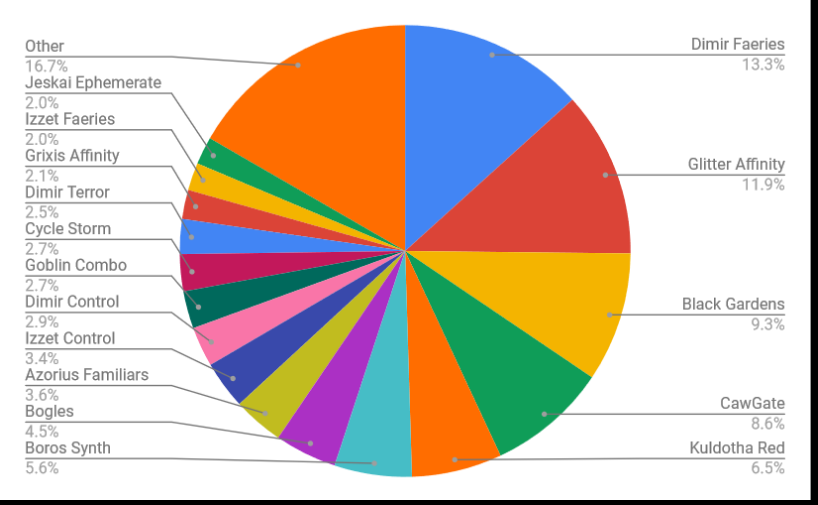
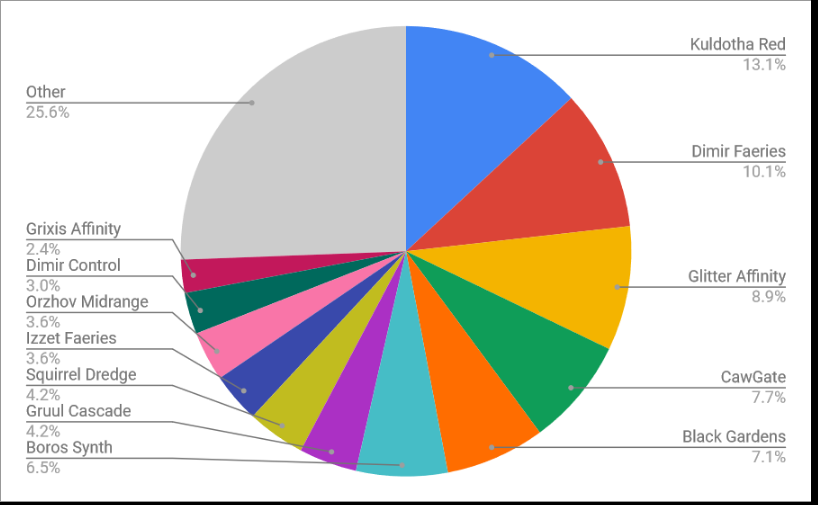
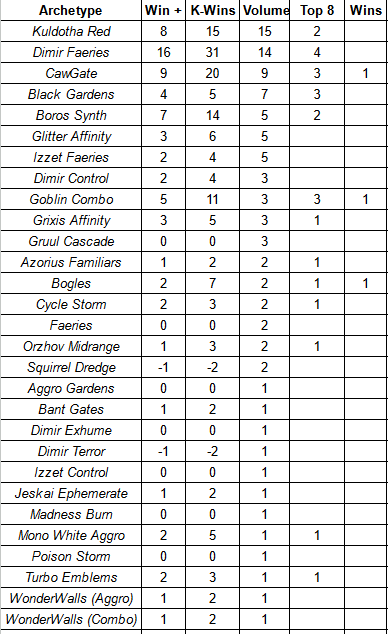
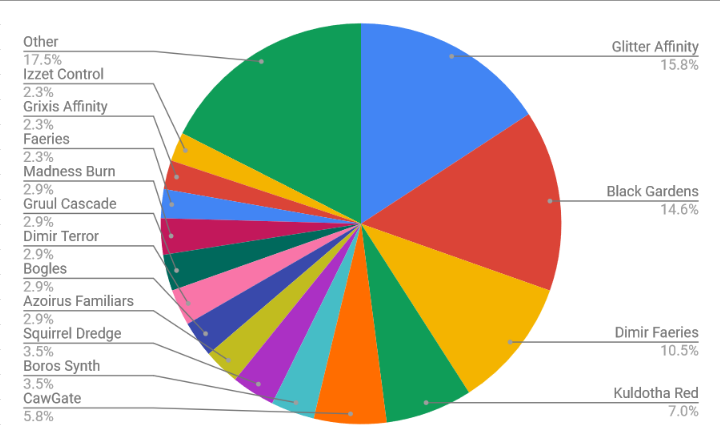
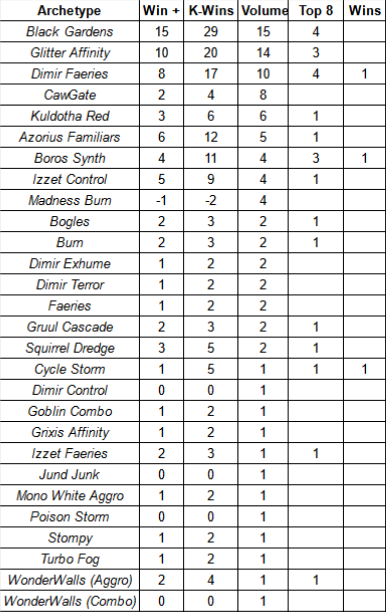

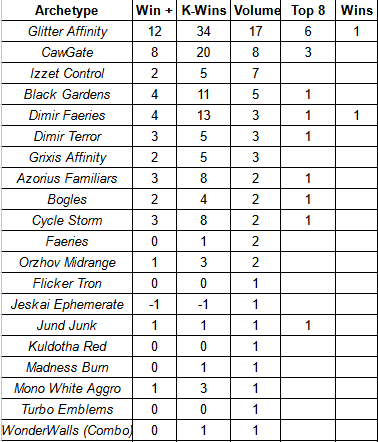
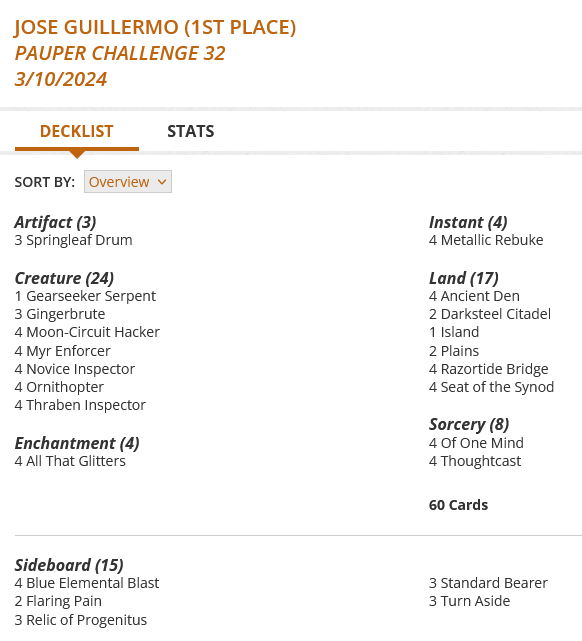
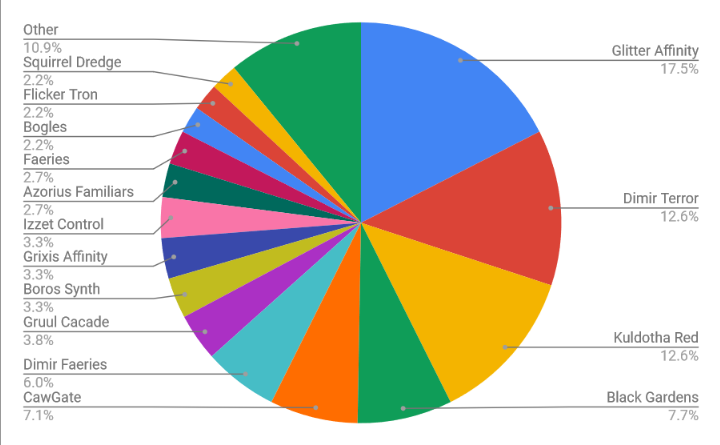
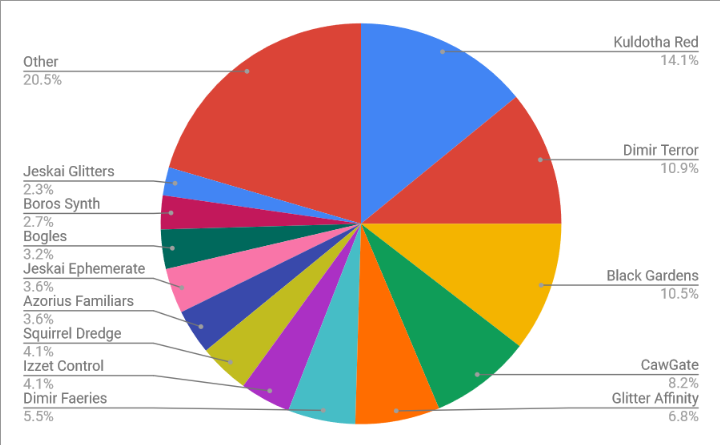
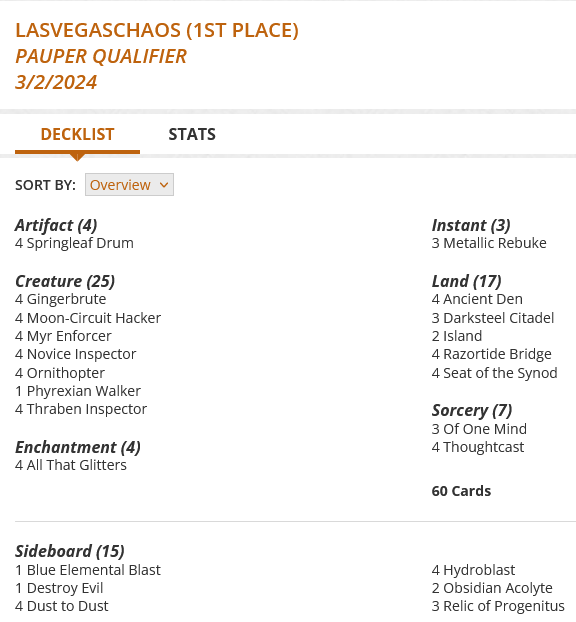
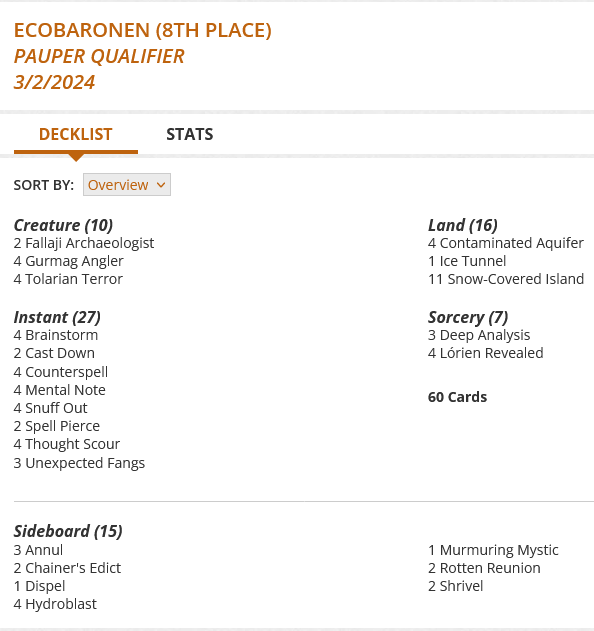
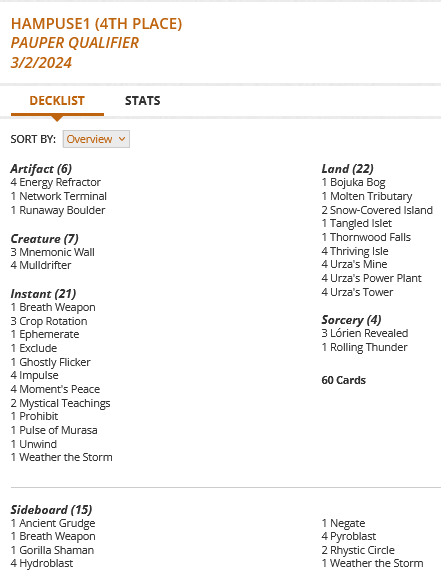

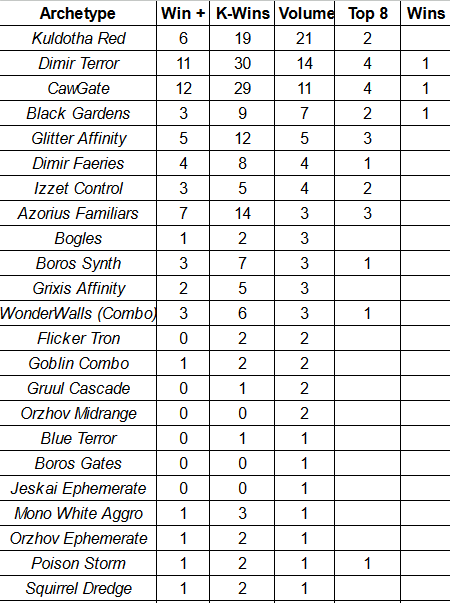
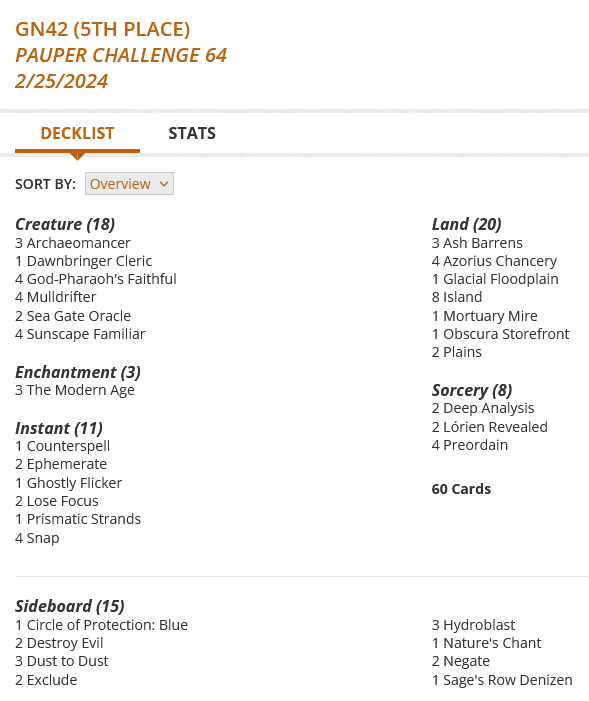

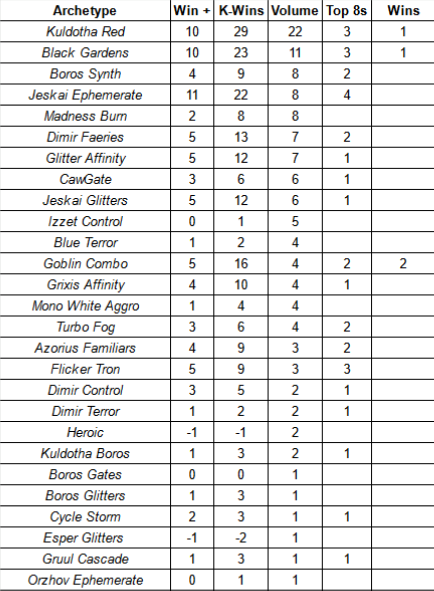
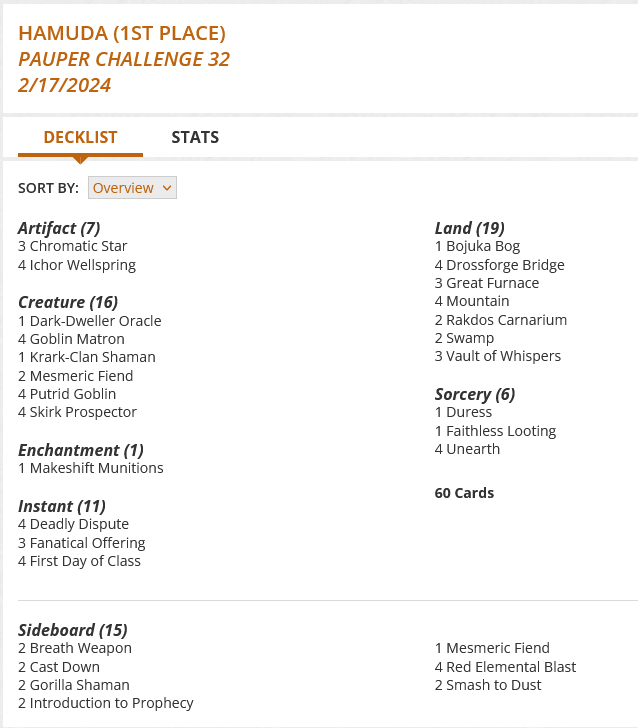
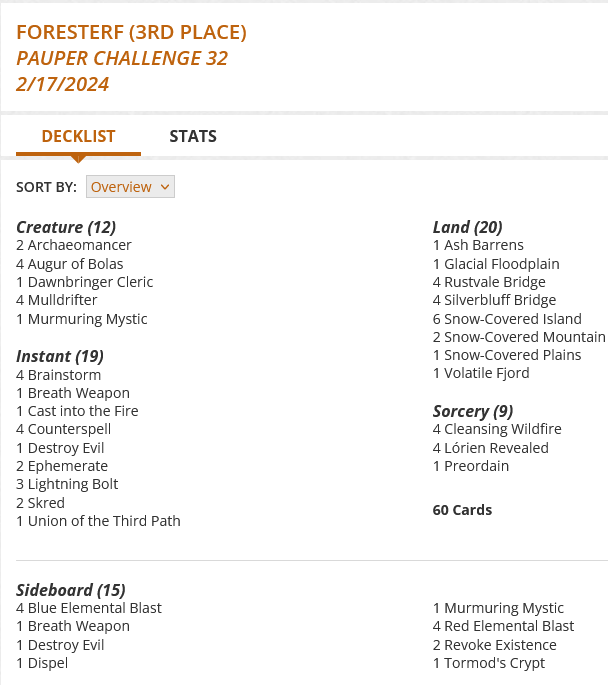
You must be logged in to post a comment.